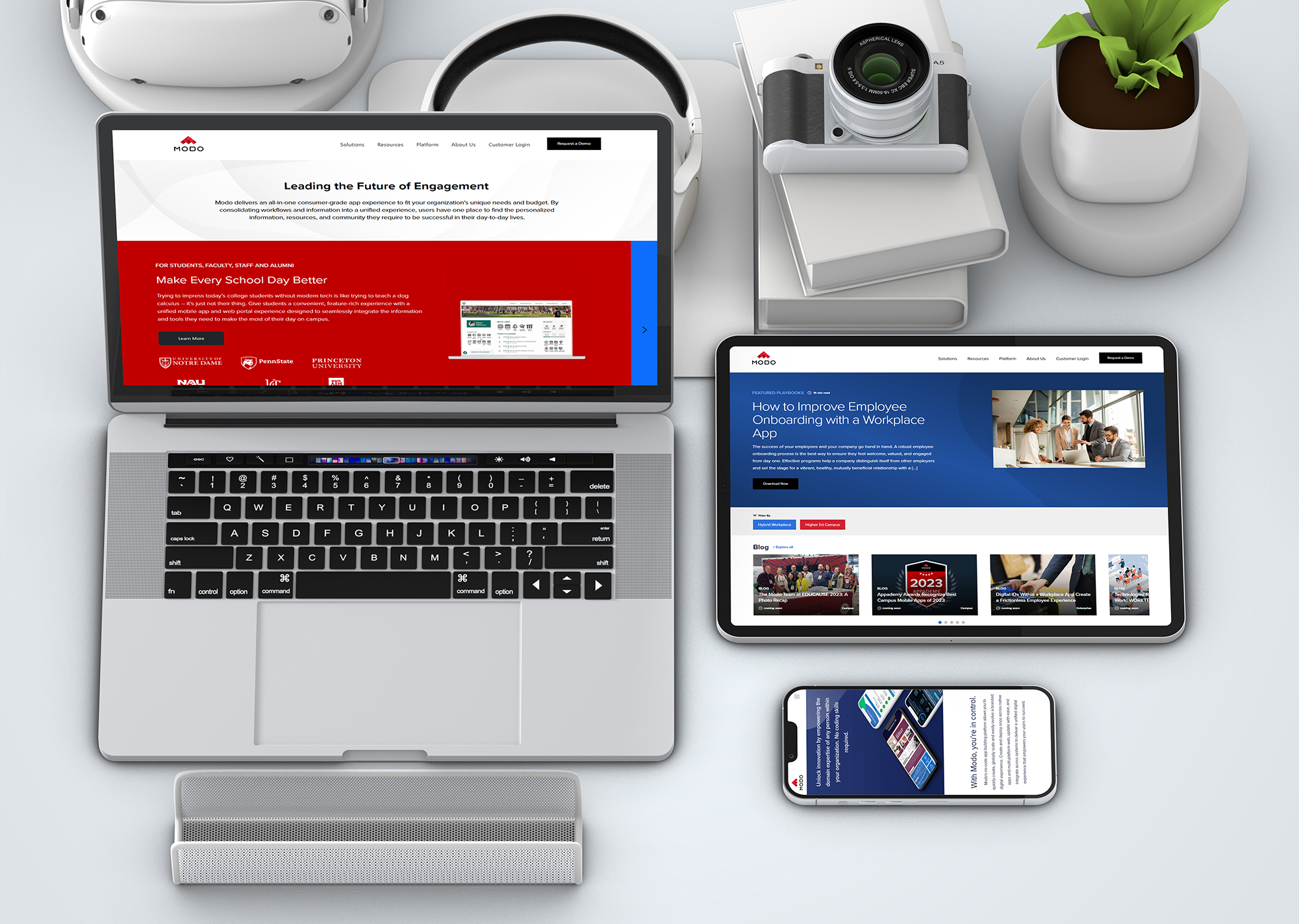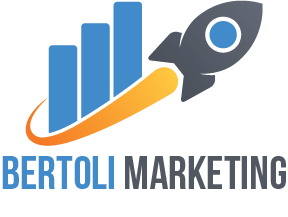Enterprise Website Design
Get a Complimentary
Digital Marketing Audit
Get Your Digital Marketing Presence Audited
SEO Audit
on-page SEO, competition analysis, backlinks, and domain authority
Website Performance
conversion rates, traffic levels, and landing pages
Recommendations
optimize your digital presence to generate more leads
What is Enterprise Website Design?
Enterprise website design is the process of creating websites specifically tailored to the needs of large organizations, corporations, or enterprises. These websites are designed to handle high volumes of traffic, support complex functionalities, and provide a seamless user experience across various devices and platforms. Unlike small business websites, enterprise websites require a robust infrastructure, advanced security measures, and scalable solutions to accommodate the dynamic needs of the business.
Traditional websites for small businesses or personal use often focus on delivering basic information and engaging a local or niche audience. However, enterprise websites must cater to a much broader audience, often spanning multiple countries and languages, and must integrate with various business systems and software solutions.

Key Features of Enterprise Website Design
Scalability
Enterprise websites must be able to grow and evolve with the business. This involves:
Flexible Architecture: Designed to accommodate an increasing number of users, content, and functionalities. As your business expands, your website should seamlessly support the additional load without compromising performance.
Cloud Solutions: Utilizing cloud services to ensure scalability and flexibility in resource management. Cloud infrastructure allows for dynamic scaling, where resources can be adjusted based on real-time demand, ensuring that your website remains fast and responsive even during traffic spikes.
Robust Security
Security is a paramount concern for enterprise websites due to the sensitive nature of the data they handle.
Advanced Encryption: Protecting data transmission and storage through sophisticated encryption methods. This ensures that any data exchanged between the website and users is secure from interception and tampering.
Regular Audits: Conducting frequent security audits to identify and mitigate potential vulnerabilities. Regular penetration testing, vulnerability scanning, and compliance checks help in maintaining a secure environment.
Performance Optimization
High performance is critical for enterprise websites to ensure a smooth user experience.
Load Balancing: Distributing incoming traffic across multiple servers to prevent overload. This ensures that no single server becomes a bottleneck, which can degrade performance and user experience.
Caching Mechanisms: Implementing caching strategies to speed up content delivery. By storing copies of frequently accessed content, caching reduces the load on servers and decreases page load times.
Content Management
Enterprise websites require robust content management systems (CMS) that allow for easy content updates and management.
User Roles and Permissions: A CMS with detailed user roles and permissions ensures that content creation and editing can be distributed across different teams while maintaining control and consistency.
Multilingual Support: Many enterprises operate globally, making multilingual support essential. A CMS should facilitate easy translation and localization of content.
Integration Capabilities
Enterprise websites often need to integrate with various internal and third-party systems.
CRM and ERP Integration: Seamlessly connecting the website with Customer Relationship Management (CRM) and Enterprise Resource Planning (ERP) systems can enhance operational efficiency and provide a unified view of customer interactions.
API Connectivity: Utilizing APIs to connect with other business applications, enabling data flow and automation between different systems.
Benefits of Enterprise Website Design
1. Enhanced User Experience
A well-designed enterprise website provides an intuitive and engaging user experience.
- Responsive Design: Ensuring the website is accessible and functional across all devices and screen sizes. This is crucial as more users access websites via mobile devices.
- Personalization: Offering personalized content and recommendations based on user behavior and preferences. Personalization can significantly improve user engagement and satisfaction.


2. Improved Business Efficiency
By integrating various business processes, an enterprise website can significantly enhance operational efficiency.
- Workflow Automation: Streamlining business operations through automated workflows and processes. Automation reduces manual intervention, errors, and speeds up processes.
- Integrated Systems: Connecting different business systems (CRM, ERP, etc.) to ensure seamless data flow. This integration ensures that data is synchronized across systems, providing accurate and up-to-date information.
3. Increased Visibility and Reach
An enterprise website can help improve the visibility and reach of the business.
- SEO Optimization: Implementing SEO best practices to enhance search engine rankings and drive organic traffic. This includes keyword optimization, high-quality content creation, and technical SEO enhancements.
- Content Marketing: Leveraging content marketing strategies to attract and engage target audiences. Regularly publishing valuable and relevant content helps in building authority and attracting inbound traffic.

The Enterprise Website Design Process

The first phase involves understanding the business goals, target audience, and technical requirements.
- Stakeholder Interviews: Engaging with key stakeholders to gather insights and requirements. This ensures that the website aligns with the business’s strategic objectives.
- Competitive Analysis: Analyzing competitors to identify strengths, weaknesses, and opportunities. Understanding the competitive landscape helps in creating a website that stands out.

This phase focuses on creating a visually appealing and functional website.
- Wireframing and Prototyping: Developing wireframes and prototypes to visualize the design and layout. This step is crucial for getting stakeholder buy-in and ensuring that the design meets user expectations.
- Custom Development: Building custom functionalities and integrations to meet specific business needs. This can include custom APIs, unique interactive elements, and bespoke content management solutions.

Before the website goes live, it undergoes rigorous testing to ensure it meets all quality standards.
- Usability Testing: Assessing the user experience through usability testing and feedback. This helps in identifying any issues that users might face and addressing them before launch.
- Performance Testing: Evaluating the website’s performance under various conditions to ensure it can handle high traffic. Load testing and stress testing are part of this phase.

Once the website is launched, continuous monitoring and optimization are essential to maintain its effectiveness.
- Analytics and Reporting: Using analytics tools to track performance and identify areas for improvement. Regular reports help in making data-driven decisions for ongoing optimization.
- Regular Updates: Implementing regular updates and enhancements based on user feedback and new requirements. This ensures that the website remains relevant and effective.
Real-World Examples of Enterprise Website Design
Example 1: Amazon
- Scalability: Amazon’s website is designed to handle millions of users simultaneously, with a robust infrastructure that supports rapid scaling. During peak shopping seasons, such as Black Friday, the site seamlessly manages huge surges in traffic.
- Personalization: The site offers personalized recommendations based on user browsing and purchase history, enhancing the shopping experience. This personalization is powered by sophisticated algorithms and vast amounts of data.
Example 2: IBM
- Integration: IBM’s enterprise website integrates various business systems, providing a unified platform for customers and partners. This integration allows for efficient data flow and improved customer service.
- Security: The site employs advanced security measures to protect sensitive information and ensure compliance with industry standards. Regular security audits and updates ensure that the site remains secure.
Example 3: Microsoft
- User Experience: Microsoft’s enterprise website offers a seamless user experience with intuitive navigation and a clean design. The site is optimized for both desktop and mobile users, ensuring accessibility and functionality across devices.
- Content Management: The website’s robust content management system allows for frequent updates and localization, catering to a global audience with content in multiple languages.
How Bertoli Marketing Excels in Enterprise Website Design
Our Expertise
Experienced Team: Our team comprises skilled designers, developers, and digital strategists with extensive experience in enterprise website design. We bring together a diverse set of skills to tackle the complex challenges of enterprise websites.
Proven Process: We follow a proven process that ensures every aspect of the website is meticulously planned and executed. From discovery to launch, we ensure that all stages are handled with precision and attention to detail.
Customized Solutions
Tailored Strategies: We develop customized strategies that align with your business goals and target audience. Our solutions are designed to address your specific challenges and opportunities.
Flexible Solutions: Our solutions are designed to be flexible and scalable, accommodating the evolving needs of your business. We build websites that can grow and adapt as your business changes.
Client Success Stories
Case Study: Global Corporation: We helped a global corporation revamp its website, resulting in a 50% increase in user engagement and a 30% boost in conversion rates. Our data-driven approach ensured that the new design met the company's strategic objectives.
Case Study: Leading Manufacturer: Our redesign of a leading manufacturer's website improved site performance by 40% and reduced bounce rates by 25%. The new design enhanced user experience and supported the company's marketing goals.
Why Choose Bertoli Marketing?
Comprehensive Services
We offer a full range of services, from initial strategy development to ongoing maintenance and optimization. Our comprehensive approach ensures that all aspects of your website are covered.
Data-Driven Approach
Our decisions are guided by data and performance metrics, ensuring that every aspect of your website is optimized for success. We use advanced analytics tools to gather insights and drive continuous improvement.
Client-Centric Focus
Your satisfaction is our top priority. We work closely with you to understand your goals and challenges, delivering solutions that drive results.

